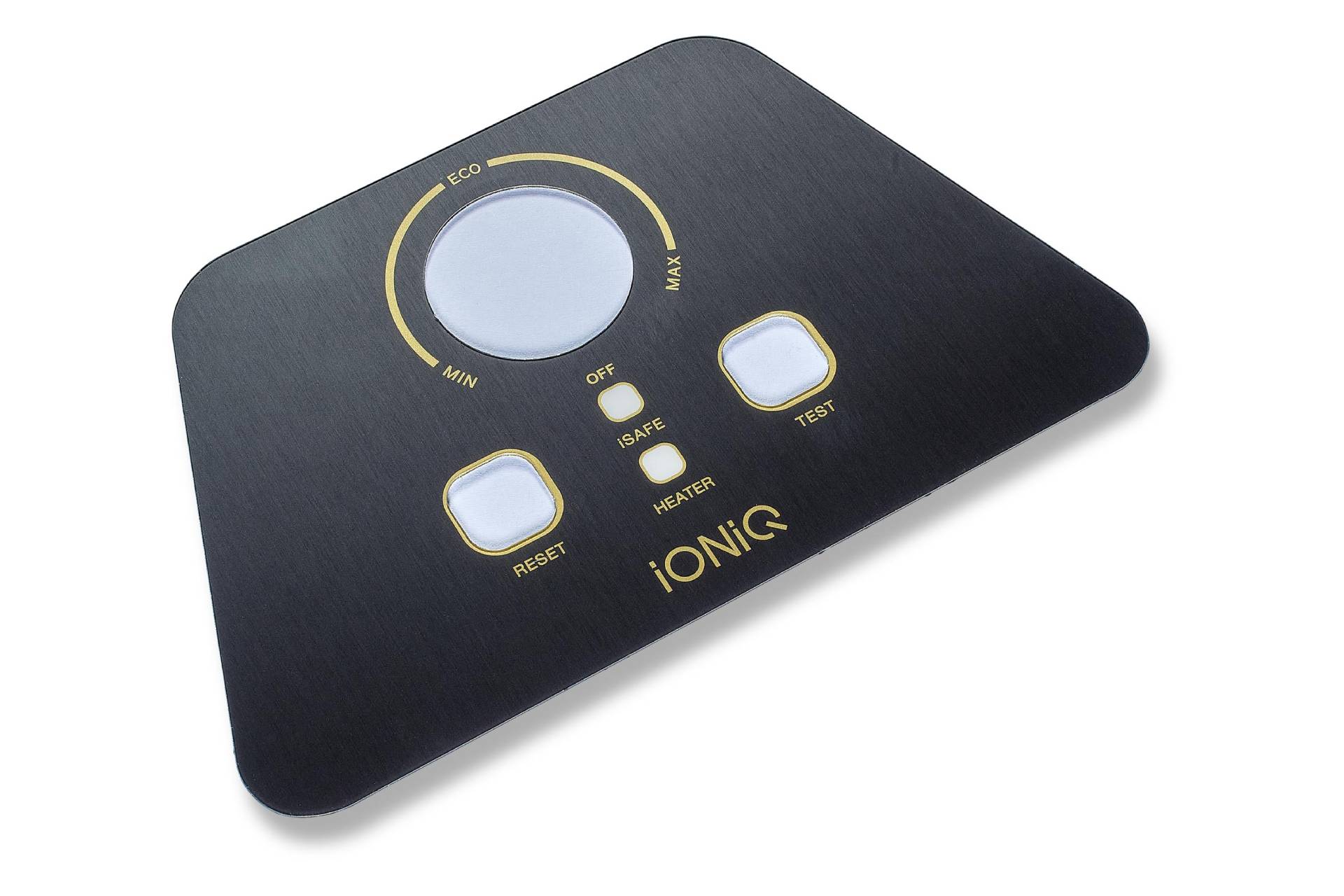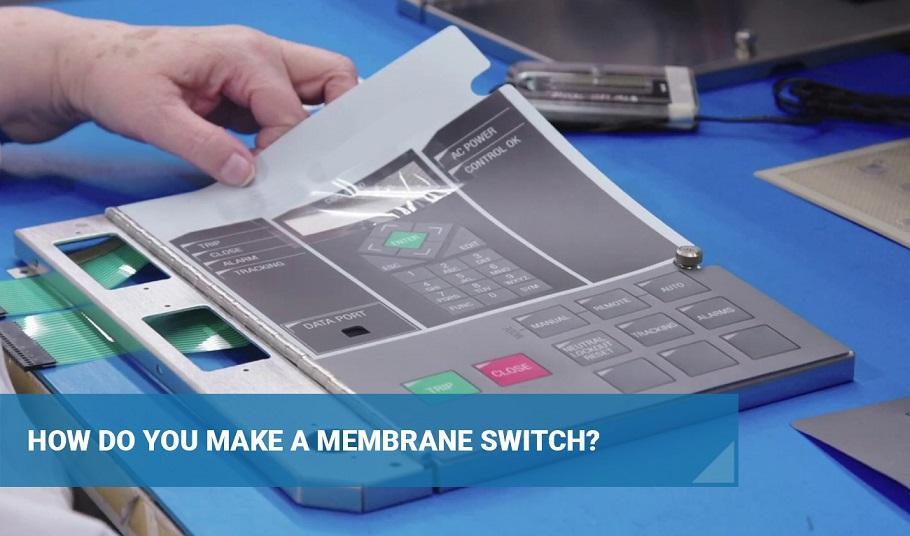Membrane Switch Manufacturer Providing Durable and Long-Lasting Interfaces
Exactly How Membrane Switch Technology Functions and Its Duty in Interface Style
Membrane button modern technology is an innovative method that integrates split materials for touch-sensitive input. When pressed, its style is composed of visuals overlays, conductive layers, and sticky parts that engage. This communication not just completes an electric circuit but additionally affects the total individual experience. Comprehending the intricacies of this modern technology discloses its considerable effect on individual interface style, prompting inquiries concerning its applications and future developments in different industries.
Understanding Membrane Switch Innovation
Membrane switch modern technology acts as an essential part in modern-day customer interface style. This technology incorporates visuals overlays, touch-sensitive membranes, and circuit layers to develop a portable, dependable input approach for numerous devices. The layout commonly contains several layers, including a published graphic layer that permits users to connect with the tool with responsive feedback. Membrane buttons are recognized for their resilience, resistance to moisture, and simplicity of cleansing, making them suitable for environments where standard mechanical switches may fall short. Their inconspicuous design allows seamless combination into gadgets, contributing to a smooth appearance. On top of that, Membrane buttons can be personalized with various colors, appearances, and signs, boosting individual experience and visual charm. This adaptability makes them prominent in customer electronics, clinical devices, and industrial controls, where instinctive communication is vital. Generally, Membrane switch technology stands for a considerable improvement in how individuals involve with digital interfaces.
Key Parts of Membrane Switches Over
Membrane switches include several crucial components that add to their performance and design. The conductive layer products, glue and assistance layers, and visuals overlay design each play a vital duty in ensuring perfect performance and customer communication. Comprehending these components is important for reliable user interface design.
Conductive Layer Materials
Conductive layer products play a vital duty in the functionality and dependability of Membrane switches. When pressure is used to the button, these products are accountable for completing electrical circuits. Usually, a mix of conductive inks, such as silver or carbon, is utilized to produce these layers. Silver conductive ink is preferred for its premium conductivity and toughness, while carbon ink is commonly utilized for cost-effective applications. The option of product affects not only the electrical efficiency but additionally the general lifespan of the switch. Additionally, the density and make-up of conductive layers can affect tactile comments and switch actuation. Picking the proper conductive material is crucial for ensuring excellent performance in diverse user interface applications.
Sticky and Support Layers
Adhesive and support layers are important parts that add to the structural stability and functionality of Membrane buttons. These layers offer a durable foundation, guaranteeing that the different aspects of the Membrane switch remain securely bonded and properly straightened throughout their functional life. The glue layer helps with the add-on of the button to the underlying surface, using durability against ecological elements such as wetness, temperature level variations, and mechanical stress and anxiety. On the other hand, support layers boost the switch's rigidness, stopping deformation during use and adding to a constant responsive response. With each other, these components play an important role in maintaining the efficiency and durability of Membrane switches, inevitably affecting the general user experience in interface style.
Graphic Overlay Style
Although typically overlooked, graphic overlay style plays an essential duty in the functionality and aesthetics of Membrane buttons. This layout mainly serves as the interface in between the individual and the electronics, providing both aesthetic appeal and functional quality. Reliable graphic overlays use color, typography, and symbols to guide users in understanding and maneuvering controls gadget functions. Furthermore, the selection of products influences longevity and tactile responses, making sure the overlay stands up to wear while maintaining a pleasant individual experience. Additionally, precise placement of the overlay with the underlying parts is vital for optimal performance. To conclude, thoughtful graphic overlay layout improves use, adds to brand identity, and ultimately affects user satisfaction in devices utilizing Membrane button modern technology.
The Production Process of Membrane Switches Over
The manufacturing procedure of Membrane switches includes several important steps that assure capability and resilience. Originally, a graphic overlay is created, including user interface aspects and branding. This overlay is published onto an adaptable substrate, typically polyester or polycarbonate, using precision printing strategies to identify clearness and shade accuracy.Next, sticky layers are applied, adhered to by the combination of conductive traces, commonly made from silver or carbon, which are necessary for electric connectivity. These traces are etched or screen-printed onto a separate layer. Hereafter, a spacer layer is contributed to produce the needed gap between the circuit and the overlay layer, enabling tactile comments when activated.Finally, the elements are set up and examined for quality control, assuring that each Membrane button satisfies the required specs for performance and dependability. This precise procedure leads blog here to a robust item matched for numerous applications in interface layout.
Advantages of Using Membrane Switches Over

Membrane switches over offer numerous benefits that make them a favored selection in interface layout. One considerable benefit is their lightweight and compact nature, enabling streamlined styles in various applications. Furthermore, Membrane switches supply a sealed user interface, safeguarding against dirt, dampness, and contaminants, which boosts longevity and dependability. They are likewise highly customizable, allowing designers to produce special graphics and formats customized to certain customer needs.Another advantage is their cost-effectiveness, as they typically need much less material and labor contrasted to standard buttons. The tactile comments of Membrane switches can be engineered to improve user experience, offering a satisfying reaction without the mass of mechanical elements. Additionally, Membrane buttons can be easily incorporated right into diverse environments, such as clinical gadgets, industrial equipment, and customer electronic devices. In general, these benefits highlight the growing appeal of Membrane switches in modern-day interface design.
Applications in Numerous Industries
Commonly used throughout numerous sectors, Membrane button technology has actually located its area in applications varying from medical devices to consumer electronic devices. In the health care field, these switches are essential to devices such as diagnostic devices and client tracking systems, using durable, easy-to-clean interfaces that stand up to sterilization procedures. The automotive industry utilizes Membrane buttons in dashboards and control board, giving trustworthy operation in difficult environments.Consumer electronics, consisting of home devices and gaming consoles, benefit from the smooth style and customizability of Membrane switches, improving customer communication. Additionally, industrial machinery makes use of these buttons for control panels, making sure resistance to dirt and wetness while keeping functionality.Moreover, the aerospace and army sectors utilize Membrane switches for rugged applications, where reliability and performance are crucial. On the whole, Membrane button innovation serves diverse markets by integrating functionality, durability, and aesthetic allure, making it a flexible selection for modern interface.

Designing Interface With Membrane Changes
When making user interfaces with Membrane buttons, cautious consideration of both capability and looks is necessary. Membrane switches over supply a streamlined, low-profile design that can boost aesthetic allure while preserving usability. Designers must focus on switch design, making sure instinctive placement for ease of operation. The responsive responses given by the Membrane button is important; it can affect individual contentment and general experience.Additionally, color and graphic elements must line up with the brand identification, enhancing recognition and knowledge. Choosing resilient products that stand up to wear and tear is likewise important, as longevity adds to functionality over time. Integrating backlighting can improve exposure in numerous lighting conditions, even more enhancing individual communication. Inevitably, a well-designed Membrane switch user interface equilibriums both form and function, making sure that the individual experience is both efficient and engaging, meeting the demands of diverse applications throughout industries.
Future Fads in Membrane Switch Modern Technology
As Membrane button technology evolves, the integration of wise capabilities is becoming increasingly prominent. These developments allow improved interactivity and connection within customer interfaces (membrane switch manufacturer). In addition, the change in the direction of environmentally friendly materials shows a growing dedication to sustainability in layout techniques
Smart Membrane Changes

Eco-Friendly Products Use
In the middle of the innovations in Membrane button technology, a substantial trend is emerging in the direction of using environment-friendly products. Producers are significantly prioritizing sustainability by integrating biodegradable plastics and non-toxic inks, decreasing environmental effect. This change not only straightens with global ecological standards however additionally addresses customer demand for greener products. Innovations in material scientific research have actually made it possible for the advancement of sturdy, environmentally friendly choices that keep efficiency without compromising high quality. These products use equivalent functionality to typical choices while decreasing waste and poisoning. As sectors become more eco-conscious, the combination of lasting methods in Membrane switch manufacturing is expected to climb, reinforcing a commitment to ecological responsibility and leading the way for even more sustainable customer interface solutions in the future.
Regularly Asked Concerns
How Do Membrane Switches Differ From Typical Mechanical Switches?
Membrane switches over vary from typical mechanical switches largely in building and operation. They make use of flexible layers that develop a sealed user interface, whereas mechanical switches rely upon physical movement and get in touch with, resulting in unique resilience and responsive feedback features.
Can Membrane Changes Be Customized for Particular Applications?
Membrane switches can without a doubt be personalized for details applications - membrane switch manufacturer. Producers make them to meet unique demands, allowing for tailored designs, graphics, and capabilities that boost user communication and fit particular operational requirements successfully
What Is the Life-span of a Membrane Switch?
The life-span of a membrane layer button generally ranges from 1 to 5 million actuations, depending upon factors such as material quality, environmental problems, and usage frequency. Routine screening can aid establish its long life and integrity in applications.
Are Membrane Changes Immune or water resistant to Chemicals?
Membrane switches can be developed to be water-proof and immune to chemicals, depending upon the materials utilized and manufacturing procedures. Appropriate securing and safety layers boost their toughness in numerous ecological problems and applications.
Just How Do Membrane Changes Impact Device Energy Intake?
Membrane switches can significantly impact device power usage by ensuring efficient procedure. Their low power requirements throughout activation aid lessen power usage, adding to longer battery life and total enhanced efficiency in digital devices. Membrane switches are known for their longevity, resistance to dampness, and ease of cleaning, making them ideal for settings where conventional mechanical switches might fail. The auto market employs Membrane switches in control panels and control panels, providing trusted procedure in difficult environments.Consumer electronics, including home devices and gaming consoles, benefit from the sleek design and customizability of Membrane switches, boosting user interaction. In addition, commercial equipment utilizes these switches for control panels, ensuring resistance to dirt and wetness while preserving functionality.Moreover, the aerospace and armed forces markets utilize Membrane switches for tough applications, where integrity and performance are critical. The development of Membrane switch innovation is getting in an exciting phase with the appearance of clever Membrane switches, which integrate sophisticated attributes and functionalities. Membrane changes differ from conventional mechanical buttons mostly in building and construction and procedure.